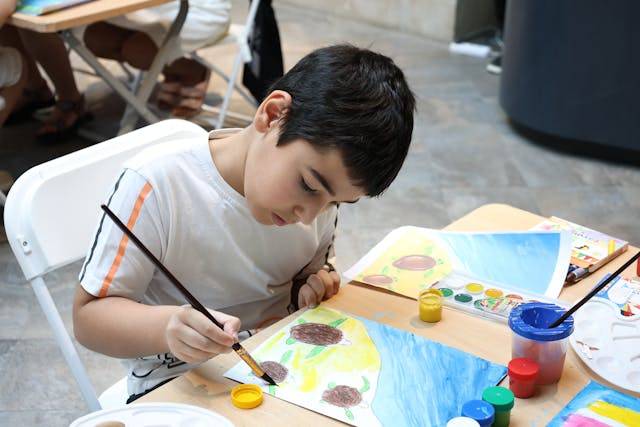Children with Attention-Deficit/Hyperactivity Disorder (ADHD) often face unique challenges in school, ranging from difficulties with focus and organization to struggles with impulse control and peer relationships. These challenges can sometimes create barriers to academic success and self-confidence if not addressed properly. With the right care strategies in place, children with ADHD can manage their symptoms and excel academically and socially. Educators, parents, and caregivers all play a vital role in shaping an environment that supports growth, builds resilience, and encourages learning. Below are several key strategies that can help children with ADHD thrive in school settings.

Establishing Structured Routines for Predictability
Children with ADHD often benefit from clear and consistent routines because structure helps them manage time, reduce distractions, and develop responsibility. A predictable daily schedule, as per Kantoko professionals, gives them a sense of stability and makes transitions between subjects or activities less overwhelming. Teachers can reinforce this by using visual schedules, timers, and reminders to cue students about what is happening next. At home, parents can support these efforts by ensuring homework and study times are consistent. This consistency allows children to channel their energy into learning instead of feeling anxious about uncertainty. Structured routines help children strengthen their organizational skills and improve focus.
Leveraging Individualized Learning Supports
Every child with ADHD has unique strengths and challenges, making individualized learning strategies important. Teachers and parents can collaborate to develop accommodations through Individualized Education Programs (IEPs) or 504 Plans. These supports might include extended time on tests, modified assignments, or seating arrangements that reduce distractions. Using multisensory teaching methods, such as combining visuals, hands-on activities, and auditory instruction, can enhance comprehension and retention. By tailoring instruction to the child’s learning style, educators make lessons more accessible and nurture the child’s confidence and engagement in the classroom.
Encouraging Movement and Breaks for Focus
Sitting still for long periods is one of the biggest challenges for children with ADHD. Integrating movement into the school day can make a significant difference in their ability to concentrate and retain information. Simple strategies such as flexible seating options, movement breaks between lessons, or classroom tasks that involve physical activity can keep children engaged without disrupting learning. Physical activity after school, such as sports or dance, helps children release excess energy and improves focus. By recognizing movement as a natural and necessary part of learning for children with ADHD, teachers and parents create an environment where students can better regulate attention and behavior.
Building Strong Teacher-Student Relationships
Positive, supportive relationships between students and teachers are crucial for children with ADHD. When a child feels understood and valued, they are more likely to stay motivated and take risks in their learning. Teachers can build trust by showing empathy, providing constructive feedback, and celebrating small successes along the way. Setting realistic expectations while encouraging growth helps children stay on track without feeling overwhelmed. Open communication between teachers, parents, and school counselors ensures that challenges are addressed early and collaboratively. A strong teacher-student relationship acts as a foundation for academic success and emotional well-being.
Teaching Self-Regulation and Social Skills
Beyond academics, children with ADHD need support in developing emotional regulation and social skills. Classroom strategies such as mindfulness exercises, breathing techniques, or emotion check-ins can help children learn how to manage impulsive behaviors and frustration. Group activities that focus on teamwork and communication foster peer relationships, reducing feelings of isolation. Social skill-building programs or therapy groups outside of school can further strengthen these abilities. By prioritizing self-regulation and social development, caregivers and educators equip children with lifelong tools that help them navigate school and future personal challenges.
Involving Parents and Caregivers in the Process
Parent involvement is a cornerstone of success for children with ADHD in school. Regular communication between home and school helps create consistency in expectations and support systems. Parents can advocate for their child’s needs, reinforce positive behaviors at home, and encourage study habits that align with classroom strategies. Attending parent workshops or support groups equips families with tools to better understand ADHD and respond constructively to challenges. When parents, teachers, and counselors work together, children feel surrounded by a team invested in their success. This collaborative approach improves academic outcomes and enhances a child’s confidence and self-esteem.
 Helping children with ADHD thrive in school settings requires a thoughtful combination of structure, individualized learning supports, movement opportunities, emotional guidance, and strong collaboration between educators and parents. These strategies work together to ensure children feel empowered rather than limited by their ADHD diagnosis. With the right environment and consistent support, children can develop the skills, resilience, and confidence needed to succeed academically and socially. When schools and families unite around effective care strategies, children with ADHD can truly thrive in their education and beyond.
Helping children with ADHD thrive in school settings requires a thoughtful combination of structure, individualized learning supports, movement opportunities, emotional guidance, and strong collaboration between educators and parents. These strategies work together to ensure children feel empowered rather than limited by their ADHD diagnosis. With the right environment and consistent support, children can develop the skills, resilience, and confidence needed to succeed academically and socially. When schools and families unite around effective care strategies, children with ADHD can truly thrive in their education and beyond.











